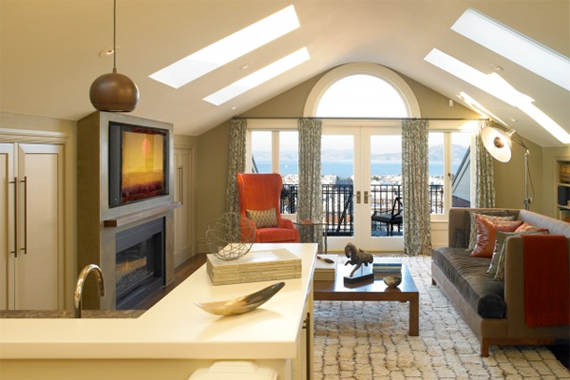Table of Content
- How To Install A New Mobile Home Anchor.
- How to Build a Mobile Home Support Pier – “I” Beam Foundation.
- Tying Things Down Properly With Mobile Home Anchors
- Filling In The Anchor Hole The Right Way.
- Mobile Home Tie Downs
- No One Has More Experience and Dedication To Excellence than UnderHome Armor
- Types of Manufactured Home Anchors (And How to Choose the Right One)
Constitutes the overwhelming majority of the contiguous United States and most of Alaska. Homes in this area should be rated to withstand winds of approximately 70 mph. Single-wide mobile homes, regardless of length, will require two vertical ties per side and three 3-5 diagonal ties. For a vertical tie-down, the anchor will be installed vertically. A stabilization device might also be attached to the top of the anchor and buried in the ground. In most states, the county inspector is required to make an inspection and verify that the installation meets state minimum requirements.

Regardless of what type of anchoring is selected – top anchoring or frame anchoring – there are various ground anchors that will be utilized to secure the mobile home to a lot. The anchors that are necessary are dictated primarily on the type of lot the mobile home is situated on. Underhome Armor will install hurricane anchors into the ground around your mobile home.
How To Install A New Mobile Home Anchor.
The stabilization device will be made of metal or concrete. This collar should be attached to keep the anchor in place. It is important to study the anchorage system properly and make sure you understand its various components. Check the requirements carefully before you go out and buy the needed anchors.

Unlike a big box store or a conventional hardware store, mobile homes are all that those who work in a specialty service and supply business do. They can help with the analysis of weather and wind maps, soil conditions and best assist their customers with the right products and know-how for a successful outcome. Manufactured homes must have anchors and tie-downs to keep them in place during high winds. Compared to site-built homes, manufactured homes are relatively lightweight. They have flat sides and ends, and they are built on frames rather than foundations. Almost all manufactured homes are elevated, situated on top of some sort of pier or foundation system.
How to Build a Mobile Home Support Pier – “I” Beam Foundation.
Mostly the hurricane-prone areas of Southern Louisiana and Florida, as well as the Alaskan coast and all of Hawaii. Mobile homes where these fierce winds blow should be able to incur speeds of up to 110 mph. Look for a “D-sticker” indicating that the home is designed for setup within 1,500 ft of the coastline in this zone. Selecting the appropriate hook-up and tension device to attach to the foundation anchor.

This ensures that the anchor is turned into undisturbed soil. HUD Code 3280 and 3285 require 1-1/4” X .035” or larger steel strapping conforming to ASTM D , standard specifications for strapping, flat steel and seals. Type 1, Grade 1, Finish B, with a minimum total capacity of 4,725 lbs. The straps must be provided with protections against weather deterioration and corrosion at least equivalent to that provided by a coating of zinc on steel of not less than .30 oz./ft. Slit or cut edges of coated strapping need not be zinc coated.
Tying Things Down Properly With Mobile Home Anchors
The anchor can be installed vertically if you also install a stabilization device to keep the anchor from moving sideways. A metal stabilization device can be attached to the top of the anchor and buried in the ground. Another option is to pour a concrete collar around the top of the anchor. The collar should be at least 10 inches in diameter and 18 inches deep. Whatever type of anchors you select, carefully follow the installation instructions. Auger anchors (screw-in anchors) can be installed manually by inserting a metal bar through the top of the anchor for added leverage or with a machine designed for this purpose.

Cut off the anchor strap leaving 8 inches beyond the anchor. Put the split bolt loosely into one of the square slots and turn the nut onto the bolt, one turn only for now. Old straps used to be wrapped around the steel I beam this is not longer allowed. The bolt holes in the anchor head should be parallel to the side of the home.
Filling In The Anchor Hole The Right Way.
From the moment your home is placed on its foundation, you’re looking at around a week or two before move in if your site work is minimal, or around six weeks if you’re developing raw land. While your GC is getting on with installing utilities and septic systems, the installation crew will set up the home itself. This involves compliance with over 100 HUD code requirements and potentially hundreds more set by the manufacturer. Weather and soil conditions in your area are other major considerations. Most jurisdictions have rules regarding the depth of clearances under the home, minimum slab thickness, frost-depth requirements, pier pad spacing and so on to account for local conditions. A good GC and set-up crew will know these requirements inside and out and will get the necessary building permits.
One of these is setting up a way to protect the home in the event of strong winds. This can be done by tying down anchors, so the house stays secure and stable. If your jurisdiction doesn’t require inspection – and even if it does – it’s worth hiring your own home inspector. A third-party inspector goes beyond code requirements and looks at the quality of the installation work. Discovering snags and problems early means you can get them fixed before the setup crew leaves the site, and within the warranty time limits. Pricing varies from $200 to around $400 but hands down, hiring a home inspector is the best money you’ll spend for assuring the longevity and safety of your home.
Underhome Armor will install mobile home tie down straps to specially designed anchors as shown in the picture above. The anchors are driven into the ground, anchoring your mobile home and preventing movement during high wind events. Underhome Armor serves many communities all over Florida and we’ll check your local building codes when pulling a permit, to make sure your mobile home is safe and up to local codes. The building code for mobile home straps can change from different city’s and counties building departments. No matter where you live, special tie-downs and anchors are needed to keep your manufactured home stable and secure. The type of foundation (pier and beam, concrete slab, etc.) that your manufactured home requires determines the type of anchoring system your home builder will use.
Out towards the sides of the anchor head as you look at it from above. When the bottom of the anchor head is level with the top of the hole and the head points toward the home, stop turning the anchor. As each load is removed from the hole, place the soil in one pile next to the anchor location for later use. If you have nice grass or a patio that you need to keep clean, pile the soil into a large bucket or plastic contractor bag.
These tie-downs exist beneath the home’s structure and are invisible at eye level. A mobile home anchor is a device used by installers to hold mobile homes or manufactured homes securely down onto their foundation piers. The anchor tie down system resists wind forces from lifting up the home during a severe storm such as a hurricane. Mobile home anchors can be purchased from just about any hardware store and from some big box chain stores.
It’s also your only opportunity to open drawers, flip switches and generally note any scratches, abrasions, faults, dents, chips, and other shortcomings with the home. The manufacturer’s manual usually contains a checklist to help with your inspection. It’s helpful to have this with your during the walk though. Which lays the floating slab in an excavated shallow pit, a foot or two below ground level.
Soil classifications usually include rock, hardpan, heavy, sandy gravel, heavy sand, silty gravel, clayey gravel, clay, silty clay, clayey silt, uncommitted fill, or peat/organic clay. To make sure you're tied down safely, consult your local building inspector. Install the anchors according to manufacturer’s instructions, keeping at least a 40-degree angle.

By definition, mobile homes are pre-built structures that are then transported to a specific site. And while mobile homes are often used as year-round, permanent homes, the fact that they can be transported or moved – if necessary – remains. Noting the portable nature of this type of housing, it shouldn’t come as a surprise that Mother Nature can take its toll on these types of housing units. Weather conditions like high winds, earthquakes, heavy storms and tornadoes have the potential to move or even tip a mobile home unit. In this piece, we’ll discuss everything you need to know about anchors and how they can help secure a mobile home.

No comments:
Post a Comment